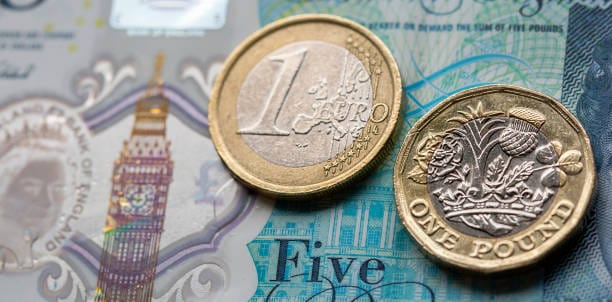GBP/EUR exchange rate midweek update: pound firms against euro despite cooling UK jobs market and rate cut speculation
The pound ticked higher against the euro as mixed data from the UK and Eurozone is overshadowed by a risk-on mood in markets.

(13/05/2024 to 15/05/2024)
Monday
The pound euro (GBP/EUR) exchange rate traded sideways through the lower reaches of the 1.16 range amid a data lull in the UK and the Eurozone.
The pound remained stable following suggestions that the UK economy is ‘turning a corner’, as UK business output rose to a two-year high in April. According to accounting and business advisory firm BDO, increased consumer spending power is helping to drive a service-led rebound.
The euro (EUR) was subdued by the shortage of market-moving data and an unclear market mood.
Tuesday
The pound was undermined by a cooling jobs market, causing it to dip lower against the euro.
The UK’s latest employment report showed the unemployment rate rose from 4.2% to 4.3% between January and March, the highest since May to July last year.
However, wage growth, excluding bonuses, remained at 6%. It had been expected to slow to 5.9% between January and March – denting interest rate cut hopes.
The wage figures will be closely monitored by the Bank of England (BoE) to inform their decision on the timing of rate cuts.
The euro was supported by a stronger-than-expected German ZEW economic sentiment index for May, but its gains were capped by consumer prices data from the Eurozone’s largest economy – helping the pound to bounce off 1.16.
German inflation remained sticky, inching up in April to 2.4%, a fraction above the European Central Bank’s (ECB) 2% target.
Wednesday
The pound jumped into the 1.16 mid-range despite better-than-expected data from the Eurozone.
The euro faced headwinds created by a risk-on mood in markets that prevented it from benefitting from the bloc’s latest industrial production figures, which beat forecasts in March.
Total production rose by 0.6% compared with a month earlier, marking a second straight month of growth.
The appetite for risk also overshadowed news that Eurozone economic growth ticked higher in the first quarter of 2024. Seasonally adjusted GDP increased by 0.3% in both the Eurozone and wider bloc, compared to a 0.1% decline in the previous quarter.
Risk-on flows supported the pound, but its gains were tempered by BoE interest rate cut speculation. Following dovish commentary from the central bank’s Chief Economist Huw Pill the previous afternoon, markets ramped up bets that it will begin loosening its monetary policy in June.
Pill said: “I think it’s not unreasonable to believe that through the summer we will begin to see enough confidence in the decline in persistence that Bank Rate will come into consideration. There has been an easing of the labour market but it still remains pretty tight by historical standards.”
Looking ahead
The only influential data release left this week is the Eurozone’s finalised inflation data on Friday. Any deviation from the forecast print could see the euro decrease in value.
Consequently, the primary catalyst of movement for the pound euro rate for the remainder of the week will likely be market mood.
